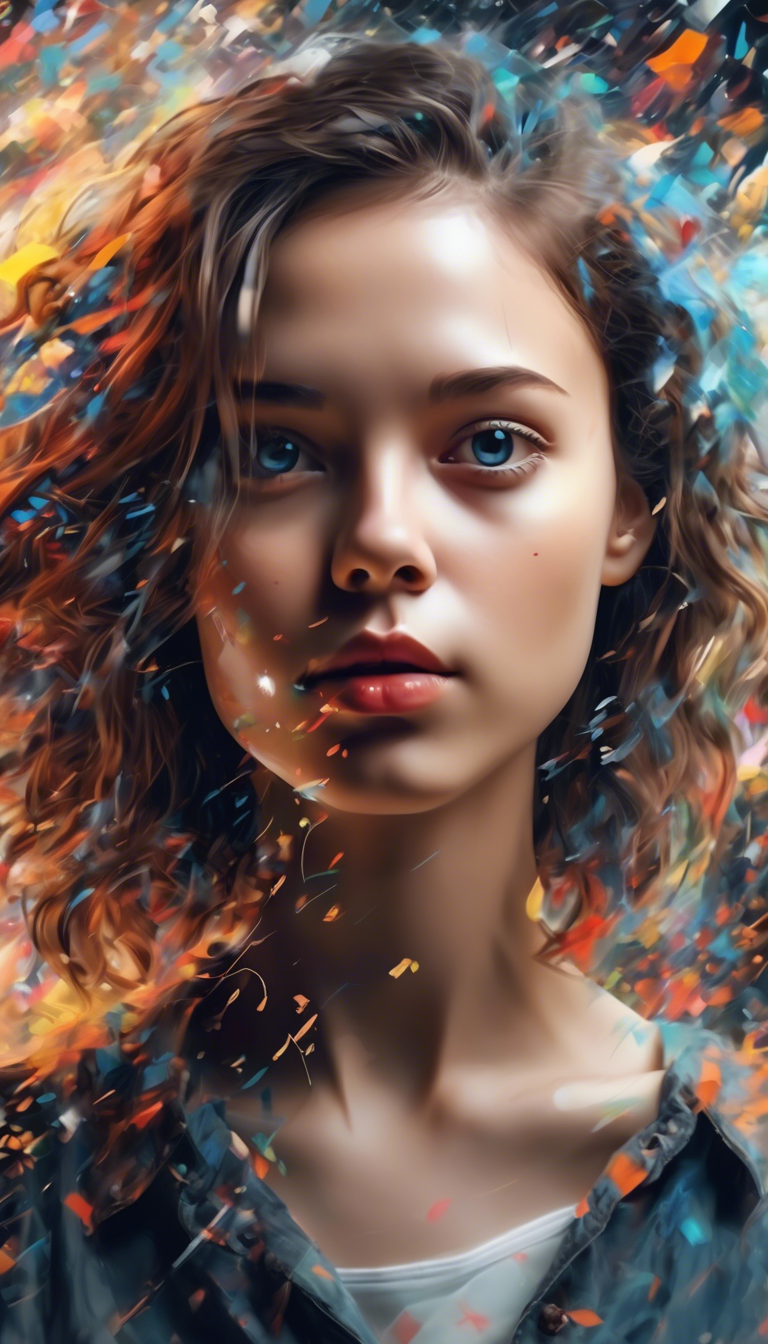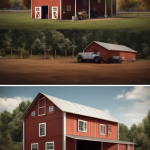The Impact of AI Art Enhancers on Creative Expression
In a world increasingly influenced by technology, the emergence of AI art enhancers is reshaping creative expression across various domains. These tools leverage artificial intelligence to augment artistic capabilities, offering artists and enthusiasts new avenues to explore their creativity. By blending imagination and advanced algorithms, AI art enhancers are revolutionizing the way art is created, perceived, and experienced.
AI art enhancers are designed to analyze and improve digital images through various techniques, such as upscaling resolution, enhancing details, and even applying different artistic styles. This technology allows creators to elevate their work without requiring extensive technical skills. For those who may not have a background in graphic design, AI art enhancers serve as a friendly introduction to the world of digital art.
One fascinating aspect of AI art enhancers is their ability to democratize art creation. Even amateurs can produce high-quality artwork, breaking down traditional barriers that previously kept some aspiring artists at bay. Imagine being able to bring your vision to life with just a few clicks! Now, you can transform a simple sketch or photograph into a polished piece ready for sharing or exhibition.
Additionally, AI art enhancers offer an expansive range of styles and effects. You can explore a variety of artistic influences—from classic impressionism to modern abstract art—simply by applying different filters or textures. This flexibility enables artists to experiment freely, fostering creativity without the fear of making irreversible changes to their original work.
Here are some of the key benefits of using AI art enhancers:
Join our amazing AI and Automation Community
- Time-saving: Artists can enhance their work more quickly, allowing for more time to focus on creativity rather than technical adjustments.
- Accessibility: The intuitive interfaces make it easy for people with varying skill levels to engage in art creation.
- Endless possibilities: Explore diverse styles and trends that provide inspiration and breadth to artistic ventures.
- Collaboration: AI tools can inspire collaboration among artists, leading to innovative fusion projects and ideas.
Moreover, AI art enhancers do not take away the human element of art; instead, they emphasize the artist’s role in the creative process. While the technology provides assistance, it is the unique vision and creativity of the artist that drives the final piece. The enhancement tools serve as support, making the artistic journey smoother and more enjoyable.
As AI technology continues to advance, the relationship between artists and these enhancers will likely evolve. For instance, future AI art enhancers may offer real-time collaboration features, allowing multiple artists to work on a single piece simultaneously, regardless of their geographic locations. This opens up exciting prospects for global artistic partnerships and exchanges of ideas.
However, with the rise of AI art enhancers comes the need for discussions around ethics and ownership. Questions arise regarding who owns the rights to an artwork created or enhanced by AI. As an artist, it is essential to understand how these tools influence your work and what that means for your creativity. A thoughtful approach will help navigate the potential complexities involved in using such technologies.
Another consideration is the potential impact on traditional forms of art. Some purists argue that the reliance on AI can diminish the value of handmade art. However, many believe that AI art enhancers can coexist with traditional techniques, enriching the broader art world rather than diminishing it. After all, art has always evolved alongside technology, from the invention of photography to the latest digital art techniques.
Join our amazing AI and Automation Community
AI art enhancers are transforming creative expression by making art more accessible and allowing for unprecedented experimentation. They empower artists by providing the tools to elevate their work while still honoring the core of artistic creativity. As we explore this fascinating intersection of art and technology, it is crucial to embrace the benefits and engage in meaningful conversations about the future of art in an AI-enhanced world.
Exploring the Ethical Considerations of AI in Art Creation
As artificial intelligence (AI) continues to make waves in numerous industries, the art world is not left untouched. AI tools can create stunning visual artworks, generate music, and even compose poetry. Yet, amidst this technological revolution, ethical concerns arise regarding the role of AI in art creation. It’s essential to critically examine these considerations to understand the future of artistry in a digitally transformed landscape.
The primary ethical question revolves around authorship and ownership. Traditionally, an artist’s unique vision and creative process define art. When AI systems generate artworks based on algorithms, it challenges the notion of who the true artist is. Is the creator the programmer who designed the AI, or is it the AI itself? This question can create confusion over intellectual property rights. Imagine an AI producing a painting that resembles Van Gogh’s style. Who retains the rights to that artwork?
In addition to authorship issues, the concept of originality is also at stake. AI can analyze vast amounts of data and mimic artistic styles with ease. While this can lead to the creation of novel pieces, it raises the concern of whether AI-generated art is truly original or simply a remix of existing works. When an artist references or builds upon previous approaches, they often infuse their individuality. However, with AI, the distinction of individuality blurs, resulting in pieces that might lack the personal touch that defines true artistry.
Moreover, the use of AI in art can have significant implications for artists’ livelihoods. As AI becomes increasingly capable, there may be a decline in demand for traditional artists. This could lead to lost income opportunities for many talented individuals who rely on their creativity to sustain their careers. Therefore, industry support is critical as artists adapt to this technological shift, ensuring that AI complements rather than replaces human creativity.
Join our amazing AI and Automation Community
Another pressing consideration involves the impact on creativity. Critics argue that when we rely on machines to create, the essence of creativity may diminish. Creativity is often born from human experiences, emotions, and perspectives, elements that AI struggles to replicate meaningfully. Can AI ever truly understand the human experience, or will it merely simulate it? This question circles back to the crux of art’s purpose—whether it serves to reflect human emotions or to mimic patterns.
Furthermore, bias in AI systems can skew the artistic outcomes. Most AI algorithms are trained on existing data sets, which may carry cultural biases or historical imbalances. If AI predominantly learns from art produced by specific demographics, it may create an echo chamber, limiting the diversity of artistic expression. Therefore, it is crucial to ensure that training data reflects a wide range of voices and styles to promote inclusivity in AI-generated art.
To address these ethical concerns, a few strategies can be adopted:
- Establish Clear Guidelines: The art community and tech developers should collaboratively define what constitutes ethical AI art creation, focusing on transparency in the technology used.
- Promote Collaboration: Encourage partnerships between human artists and AI systems. This can lead to experiences where technology augments human creativity, producing art that embodies a blend of both worlds.
- Support for Artists: Provide resources and training for artists to harness AI tools, ensuring they remain relevant in adapting to this new artistic environment.
- Diverse Data Representation: Work towards creating balanced data sets that include a variety of cultural styles, perspectives, and practices to mitigate bias in AI-generated outputs.
By navigating these ethical challenges, the intersection of AI and art can flourish. Embracing technology while respecting traditional values provides a pathway for innovation without sacrificing the core essence of human creativity. Ultimately, fostering a balanced relationship between AI and artists is key to unlocking a vibrant future for art in the digital age.
Conclusion
The emergence of AI art enhancers has transformed the way we think about creative expression. Artists now have new tools at their disposal that can inspire fresh ideas and broaden their artistic horizons. These technologies allow individuals to experiment with different styles, enhance their existing work, and even explore combinations they might not have considered before. This evolution opens up many possibilities, enabling everyone from seasoned professionals to enthusiastic beginners to deepen their artistic journey.
Join our amazing AI and Automation Community
However, the rise of these tools also presents ethical considerations that we must navigate carefully. Questions surrounding originality, copyright, and the role of the artist have become prominent in discussions about AI-generated art. As we embrace these advancements, it’s essential to consider what it means to create in collaboration with AI. Understanding the balance between human creativity and machine assistance will help us foster a respectful relationship with technology, ensuring that we continue to value the unique perspectives that human artists bring to the table.
As AI art enhancers become more integrated into the creative process, artists and enthusiasts alike can enjoy the benefits while remaining mindful of the implications. By promoting transparency and accountability in this field, we can stimulate healthy dialogue on the intersection of technology and creativity. As you explore the world of AI art enhancers, remember that they are not merely tools but rather companions on your creative journey, amplifying your voice and expanding your potential. Embrace the possibilities while honoring the rich tradition of artistic expression that comes from the heart and soul of humanity.


